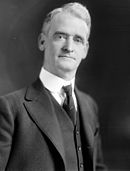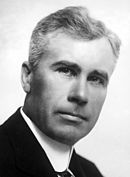United States House of Representatives elections, 1916
|
|
|||||||||||||||||||||||||||||||||||||||||||||||||||||||||||||||||||||||
|
|||||||||||||||||||||||||||||||||||||||||||||||||||||||||||||||||||||||
|
|||||||||||||||||||||||||||||||||||||||||||||||||||||||||||||||||||||||
|
|||||||||||||||||||||||||||||||||||||||||||||||||||||||||||||||||||||||
Elections to the United States House of Representatives in 1916 were held for members of the 65th Congress, coinciding with the re-election of President Woodrow Wilson.
Wilson eked out a narrow re-election, but his Democratic Party lost seats to the opposition Republican Party. Wilson's hybrid approach, which injected a progressive element into Democratic policies, had proved to be dissatisfying to much of the nation. International affairs also became important in the traditionally non-interventionist United States, as voters attempted to determine which party would be best served to keep the nation from entering The Great War.
Although the Republicans gained a plurality, the Democrats narrowly maintained control of the House with minor party support, forming an alliance with the remaining third-party Progressives and Socialist Meyer London. This is the last example (to date) of a type of coalition holding power in the House, rather than a single party winning a majority of seats. Specifically, this is also the only election in U.S. history when three different parties were able to form a coalition government instead of just two. Because of this, it was only the second Congress where the party with the most seats was in opposition (versus being part of the ruling government) in the House, the first being the 34th Congress elected in 1854. This rare occurrence may have been why the parties' plan to form a coalition backfired, as voters quickly rejected the Progressive and Socialist parties in the next election. Meanwhile, the Democrats also lost support afterwards and would not control the House again until after the 1930 elections.
...
Wikipedia





